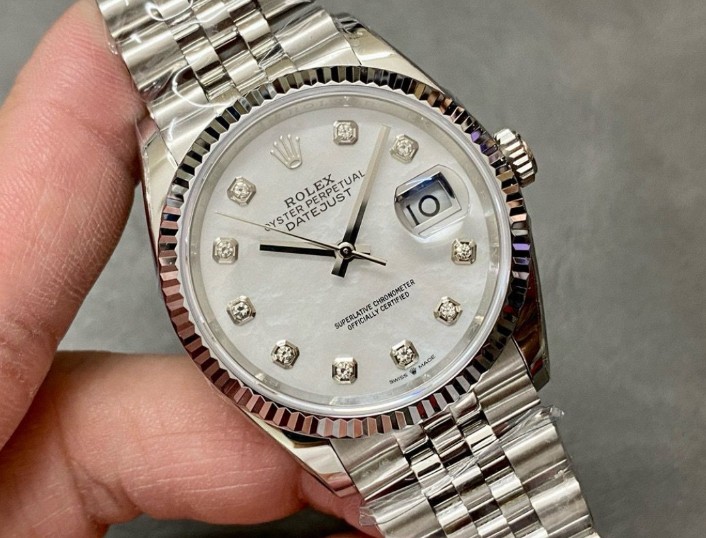The watch industry has an interesting mix of tradition and innovation. People have always loved watches, from the old ones with gears to today’s smartwatches. They aren’t just for telling time anymore but are also fashion items and status symbols. Major brands like Rolex, Omega, and TAG Heuer are known worldwide for their heritage and craftsmanship. There’s a wide range of styles and prices, making sure there’s a watch for everyone, whether you’re buying your first piece or adding to a collection.
Importance and Value of Luxury Watches
Luxury watches hold a special place in the market. They are more than fashion statements; they often represent a blend of art and technology. These watches have a story and craftsmanship that makes them valuable and sometimes iconic. Owning a luxury watch can be a sign of success and taste. They’re often made with top materials and precision, which makes them long-lasting. People who invest in real luxury watches appreciate their history and potential to increase in value. Also, these watches are often passed down through generations, becoming a part of family heritage. Whether it’s for the artistry or the prestige, real luxury watches carry a unique significance for their owners.
Understanding Replica Watches
Definition and Characteristics
Replica watches are copies of well-known brands, aiming to look like the real thing. But there are differences. Most of these replicas use cheaper materials to cut down costs. The craftsmanship might not match the original brand. While they may look almost identical at first glance, the internal parts and durability often differ significantly. Because they mimic popular brands, they attract those who like the style but don’t want to pay the high price. Spotting a replica is possible if you look closely. Pay attention to the weight, logo details, and movements inside the watch.
Market for Replica Watches
The market for replica watches is buzzing with activity. In recent years, there’s been a surge in demand. Some buyers are drawn by the affordability of replicas. For others, it’s about the thrill of owning something that looks luxurious without the hefty price tag. Online platforms have made these replicas more accessible. Yet, it’s important to know that not all replicas are equal. There are low-quality options that fall apart quickly and those that come close to fooling even a seasoned watch enthusiast. This variety makes the market quite diverse but also tricky for buyers.
Understanding Genuine Watches
Genuine watches are crafted with precision and care by skilled artisans. These watches use high-quality materials, like stainless steel and sapphire crystal. They often feature a well-known brand name on their faces. Real watches have reliable movements, either mechanical or quartz, that stand up to the test of time. Their attention to detail is noticeable, from intricate dials to the smooth motion of the hands. The craftsmanship ensures that each piece is not just a timekeeper but a work of art. These watches come with a certificate of authenticity and a serial number, which helps in tracking and verifying their legitimacy.
Market for Authentic Watches
The market for genuine watches is growing, with people showing a keen interest in investing in real watches. It’s not just about checking the time; for many, it’s about owning a piece of history or a symbol of status. Collectors and enthusiasts often seek out rare pieces, which can sometimes increase in value over time. Buying from authorized dealers or directly from the brand’s store is the safest way to ensure you’re getting an authentic timepiece. There’s a big community of watch lovers online, sharing tips and experiences to help others avoid fakes.
Role of Luxury Brands
Luxury brands play a huge role in the world of genuine watches. Brands like Rolex, Omega, and Patek Philippe are well-known for their commitment to quality and innovation. They invest heavily in research to create new movements and materials. These brands have a huge fan base that trusts their products. They also hold their value well, often becoming family heirlooms. The reputation of a luxury brand adds substantial value to a watch, making it a desirable accessory for enthusiasts and collectors alike.
Comparative Analysis: Replica vs Real
Quality and Craftsmanship
When talking about watches, quality and craftsmanship come first. Original watches usually come from skilled hands and trusted brands. They use high-quality materials that shine through time. Replicas, on the other hand, might look similar but often miss those finer details. The feel and finish of a real watch stand out. Each genuine watch is like a piece of art crafted with talent and precision. Replicas might not have the same touch, but they can still look quite appealing at a first glance.
Price and Value Differences
One can’t ignore the price when comparing replicas to real watches. Genuine watches can be quite expensive. You’re not just paying for the watch but for the brand’s legacy and promise of quality. Replicas, being cheaper, offer a similar design at a fraction of the cost. For some, this is a way to enjoy a stylish look without emptying the wallet. However, the real watch holds its value over time. If you ever decide to sell, the original watch may still fetch a good price. Replicas might not have the same resale appeal.
Durability and Longevity
We all want our watches to last. Real watches, built with top-notch materials, can last for many years. They stand up well to daily wear and tear. This durability often comes from the meticulous process and quality checks they undergo. On the flip side, replicas may not be as hardy. They might look great at the start but could show wear quite quickly. Over time, parts of a replica watch might need to be replaced, while a real watch keeps ticking effortlessly. If longevity is crucial for you, a genuine watch might be the better bet.
Brand Reputation and Trust
Brand image takes a big blow when replicas flood the market. For brands that have built their reputation on quality and craftsmanship, fakes are a thorn in their side. They dilute the brand’s value and muddle the market, making it hard for customers to trust even the genuine articles. This trust issue means brands have to work overtime to reassure their customers. Some companies respond by upping their game with unique designs, advanced technology, or added features to set themselves apart from replicas. Others invest more in brand protection, using tools like serialization and authenticity certificates to help ensure customers get the real deal. But, keeping a clean reputation is an uphill battle with the ever-growing replica market.
How to Identify a Replica
When you’re trying to figure out if a watch is real or fake, start with a close look at the overall quality. Genuine watches will always have a consistent and fine finish. Check the case and the bracelet for any rough edges or unmatched parts. Authentic watches use quality materials that feel solid and not too light.
Pay attention to the watch’s detailing. Real watches have precise engravings. If any text or logos look a bit off or blurry, that’s a warning sign. Also, examine the watch’s weight. Many replicas use cheaper materials and can feel lighter compared to the real ones.
Look at the movement or second hand. High-end watches often have a smooth sweeping seconds hand. If you notice a ticking motion, inspect further. It’s also useful to check the serial number. You can visit the brand’s website or contact them directly to verify the number.
Expert Opinions and Techniques
Experts often have a few tricks up their sleeves when it comes to catching replicas. One technique is looking at the lume. The luminescent material on genuine watches glows evenly and brightly. Replicas often glow unevenly or fade quickly.
Another expert trick is the magnification lens over the date function. Real watches will have a crystal-clear optical magnification, often with a specific zoom like 2.5x. If the date looks off or is hard to read, it might be time to question the watch’s authenticity.
Watch experts also suggest listening closely. High-end mechanical watches have a distinctive, subtle hum. Fakes often sound louder or have no sound at all. When in doubt, some professionals recommend bringing the watch to a trusted jeweler or watchmaker for their opinion.
Conclusion
In the battle between replica and real watches, we explored the main differences and what they mean for watch lovers. Real watches come with authenticity, quality, and craftsmanship. They are investments and often have history behind them. On the other hand, replica watches offer the look and feel of luxury at a fraction of the cost. However, this comes with risks of poor build, lack of warranty, and potential legal issues. We also talked about the ethical and financial implications of choosing replicas over genuine timepieces.






